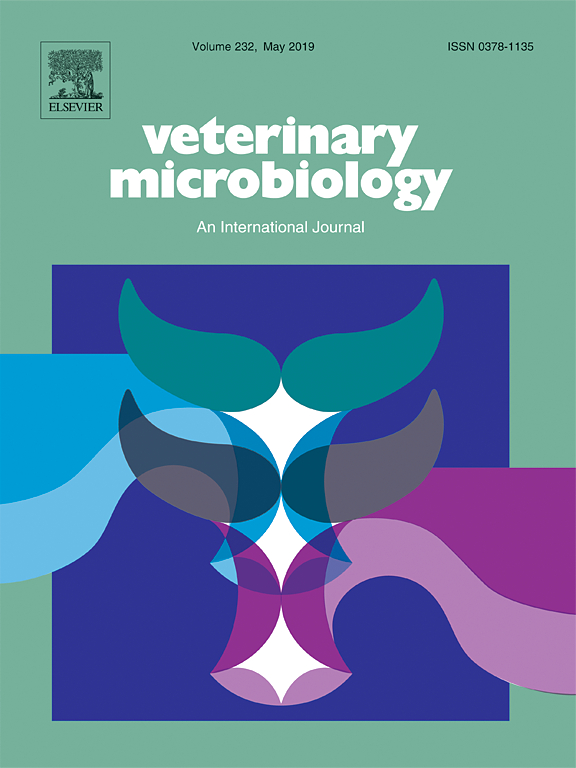Ver ítem
- xmlui.general.dspace_homeCentros Regionales y EEAsCentro Regional Buenos Aires NorteEEA San PedroArtículos científicosxmlui.ArtifactBrowser.ItemViewer.trail
- Inicio
- Centros Regionales y EEAs
- Centro Regional Buenos Aires Norte
- EEA San Pedro
- Artículos científicos
- Ver ítem
New host species for Leptospira borgpetersenii and Leptospira interrogans serovar Copenhageni
Resumen
We investigated the presence of infection by Leptospira spp. in an assembly of Sigmodontinae rodents from the Paraná Delta, Argentina. Rodents were captured in places with natural grassland, implanted forest, with and without raising cattle and in sites prone and not prone to flooding. The DNA was amplified from cultured isolates by PCR and Leptospira spp. strains were genotyped using Multiple – Locus Variable Number Tandem Repeat Analysis (MLVA). We
[ver mas...]
We investigated the presence of infection by Leptospira spp. in an assembly of Sigmodontinae rodents from the Paraná Delta, Argentina. Rodents were captured in places with natural grassland, implanted forest, with and without raising cattle and in sites prone and not prone to flooding. The DNA was amplified from cultured isolates by PCR and Leptospira spp. strains were genotyped using Multiple – Locus Variable Number Tandem Repeat Analysis (MLVA). We isolated Leptospira interrogans serovar Copenhageni from Oligoryzomys nigripes, Leptospira borgpetersenii from Scapteromys aquaticus and Leptospira interrogans serovar Icterohaemorrhagiae from Akodon azarae. The zoonotic Leptospira isolated and genotyped from O. nigripes and S. aquaticus are the first reports from these species. The geographic range of these rodent species include, in addition to Argentina, the countries of Paraguay, Uruguay and Brazil, suggesting that these rodents might be involved in the transmission of spirochetes in other regions. Human and animal health care professionals should be alert to the potential occurrence of leptospirosis in areas where these rodent species are present.
[Cerrar]

Autor
Colombo, Valeria Carolina;
Gamietea, Ignacio José;
Grune Loffler, Sylvia;
Brihuega, Bibiana Felicitas;
Beldomenico, Pablo Martín;
Fuente
Veterinary Microbiology 215 : 90-92 (February 2018)
Fecha
2018
Editorial
Elsevier
ISSN
0378-1135
Formato
pdf
Tipo de documento
artículo
Palabras Claves
Derechos de acceso
Restringido
 Excepto donde se diga explicitamente, este item se publica bajo la siguiente descripción: Creative Commons Attribution-NonCommercial-ShareAlike 2.5 Unported (CC BY-NC-SA 2.5)
Excepto donde se diga explicitamente, este item se publica bajo la siguiente descripción: Creative Commons Attribution-NonCommercial-ShareAlike 2.5 Unported (CC BY-NC-SA 2.5)

